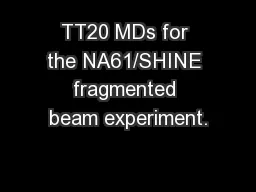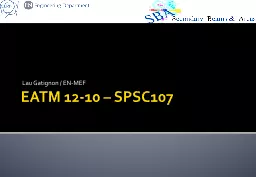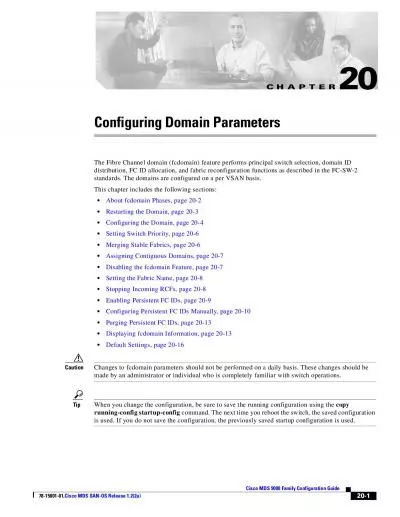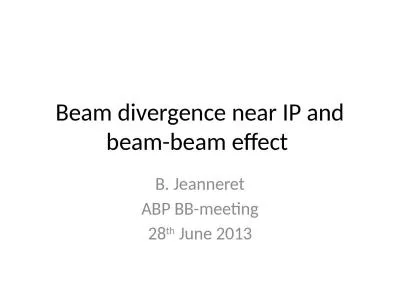PPT-TT20 MDs for the NA61/SHINE fragmented beam experiment.
Author : stefany-barnette | Published Date : 2016-08-06
Made on 3 August and 29 August 2011 Friday 239 2011 OBerrig Thanks to GArduini DManglunki IEfthymiopoulos MGazdzicki NA61 and members of the OP group KCornelis
Presentation Embed Code
Download Presentation
Download Presentation The PPT/PDF document "TT20 MDs for the NA61/SHINE fragmented b..." is the property of its rightful owner. Permission is granted to download and print the materials on this website for personal, non-commercial use only, and to display it on your personal computer provided you do not modify the materials and that you retain all copyright notices contained in the materials. By downloading content from our website, you accept the terms of this agreement.
TT20 MDs for the NA61/SHINE fragmented beam experiment.: Transcript
Download Rules Of Document
"TT20 MDs for the NA61/SHINE fragmented beam experiment."The content belongs to its owner. You may download and print it for personal use, without modification, and keep all copyright notices. By downloading, you agree to these terms.
Related Documents














